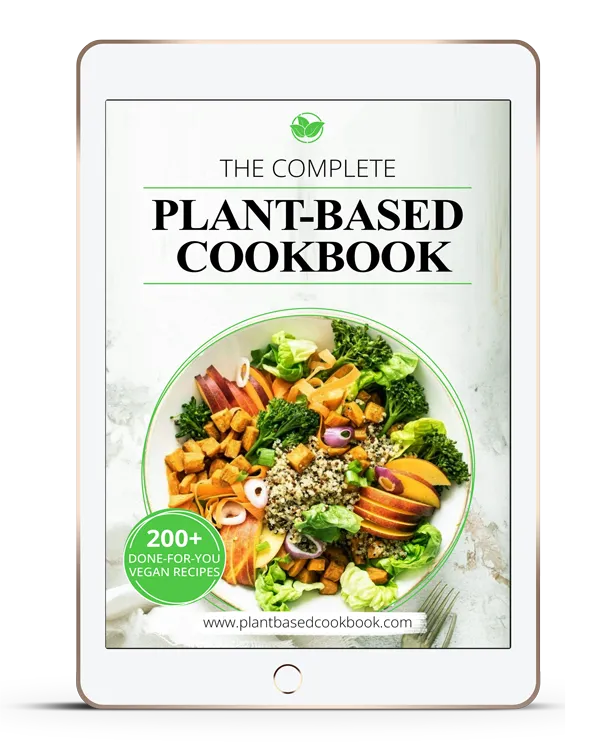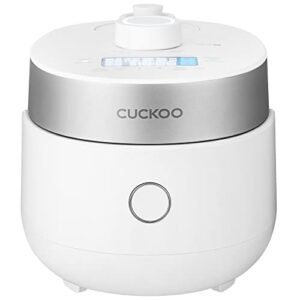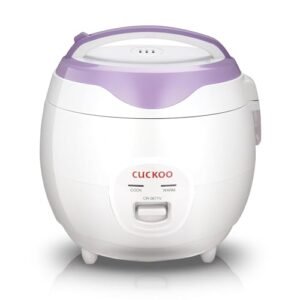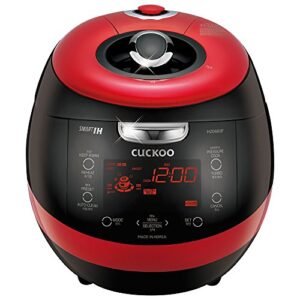Welcome to our article exploring the possibility of boiling milk in a rice cooker.
If you’re looking to expand your cooking techniques, you may have wondered if your trusty rice cooker could double as a milk boiler.
In this section, we will explore this question in depth, discussing the potential risks and benefits of utilizing a rice cooker for milk boiling. So, can you safely boil milk in a rice cooker? Let’s find out!
Table of Contents
ToggleRisks and considerations when boiling milk in a rice cooker
While it is possible to boil milk in a rice cooker, there are some risks and considerations that should be taken into account before attempting it.
First and foremost, milk has a tendency to scorch or burn easily, so constant monitoring is needed to prevent this from happening. It is important to stir the milk regularly to distribute the heat evenly and prevent it from sticking to the bottom of the cooker.
It is also important to note that not all rice cookers are designed to handle liquids other than water. Using a rice cooker that is not specifically designed for boiling milk may result in uneven heating or damage to the appliance.
Some rice cookers may also have specific instructions or settings for cooking milk, such as a low temperature or a “porridge” or “slow cook” function. It is important to follow these instructions closely to ensure the best possible results.
Another consideration is hygiene.
Milk is a delicate liquid that can easily spoil or harbor bacteria if not handled properly. It is important to clean the rice cooker thoroughly before and after use to prevent contamination and ensure the safety of the milk.
Overall, while boiling milk in a rice cooker is possible, it requires careful attention and consideration. If you do decide to try it, be sure to follow all instructions and take the necessary precautions to ensure the best possible outcome.
Tips for Safely Boiling Milk in a Rice Cooker
Boiling milk in a rice cooker is not a difficult task, but it does require some specific precautions. Follow these tips to ensure your milk is heated safely and effectively:
- Choose the right heat setting: Most rice cookers have a multitude of heat settings. To boil milk, you’ll want to choose a low or medium-low heat setting. Heating milk too quickly can cause it to scorch or burn, so it’s important to take your time.
- Stir frequently: Unlike cooking rice, boiling milk requires constant stirring. This will help prevent the milk from forming a film on top or scorching on the bottom. Use a silicone or wooden spatula to stir gently and consistently.
- Use the right amount of milk: Rice cookers come in different sizes, so it’s important to make sure you’re using the right amount of milk. As a general rule, don’t fill the rice cooker more than halfway with milk, otherwise it may overflow during heating.
- Be cautious about adding sweeteners: If you plan to add sugar, honey, or any other sweeteners to your milk, do it after the milk has been boiled. Adding sweeteners to the milk while it’s heating can cause it to caramelized or stick to the bottom of the pot.
- Monitor closely: Boiling milk in a rice cooker requires constant attention. Don’t walk away or get distracted during the boiling process, as the milk can boil over or burn quickly.
- Be patient: Heating milk in a rice cooker will take longer than boiling water or cooking rice. Don’t rush the process, and allow the milk to heat slowly and evenly.
By following these tips, you can safely and effectively boil milk in your rice cooker. Remember to be patient and monitor the process closely, and you’ll be rewarded with perfectly heated milk every time.
Alternatives to boiling milk in a rice cooker
If boiling milk in a rice cooker is not the best option for you, there are alternative methods to heat your milk.
Stovetop Methods
One common option is using a stovetop method, which involves heating the milk in a pot on a stove. This method allows for greater control over the heat and reduces the risk of burning the milk.
To use this method, pour your desired amount of milk into a pot and heat it on low to medium heat, stirring constantly to prevent scorching. Once the milk reaches your desired temperature, remove it from the heat and let it cool before use.
Microwave Heating
Another option is to heat your milk in a microwave, which can be a convenient and quick method.
To do this, pour your desired amount of milk into a microwave-safe container and heat it for short intervals (around 30 seconds at a time), stirring in between, until it reaches your desired temperature. Be careful not to overheat the milk, as this can cause it to scorch or boil over.
Specialized Milk Steamers
If you regularly heat milk and want a specialized tool, a milk steamer may be a good option for you. These machines are designed specifically to heat and froth milk for use in coffee or other hot beverages.
However, keep in mind that milk steamers can be more expensive and require more maintenance than other options.
Ultimately, the best method for heating your milk will depend on your personal preferences and situation. Consider the time, convenience, and equipment you have available, as well as any specific factors such as health concerns or dietary restrictions.
Conclusion
In conclusion, while it is technically possible to boil milk in a rice cooker, it is not generally recommended. The risk of scorching or burning the milk and the need for constant monitoring make this method less than ideal.
However, if you do decide to boil milk in a rice cooker, it is important to follow certain precautions, such as using a low heat setting and stirring frequently. Additionally, alternative methods such as stovetop heating or microwave heating may be better suited to your needs.
Ultimately, the decision to use a rice cooker for boiling milk is a personal one and depends on factors such as convenience, personal preference, and access to other heating methods. It is important to weigh the risks and benefits before deciding the best course of action.
FAQ
Q: Can you boil milk in a rice cooker?
A: Yes, it is possible to boil milk in a rice cooker. However, there are several risks and considerations to keep in mind.
Q: What are the risks and considerations when boiling milk in a rice cooker?
A: When boiling milk in a rice cooker, there is a potential for scorching or burning the milk. Constant monitoring is necessary to prevent this. Specific instructions or settings may be required to ensure safe boiling.
Q: Do you have any tips for safely boiling milk in a rice cooker?
A: Absolutely! We recommend using recommended heat settings, stirring the milk regularly, and following suggested cooking times. These tips will help you achieve safe and delicious results when boiling milk in a rice cooker.
Q: Are there alternatives to boiling milk in a rice cooker?
A: If boiling milk in a rice cooker is not advisable or convenient for you, there are alternative methods you can consider. You can use stovetop methods, microwave heating, or even specialized milk steamers. Each method has its pros and cons, so choose the one that works best for you.







